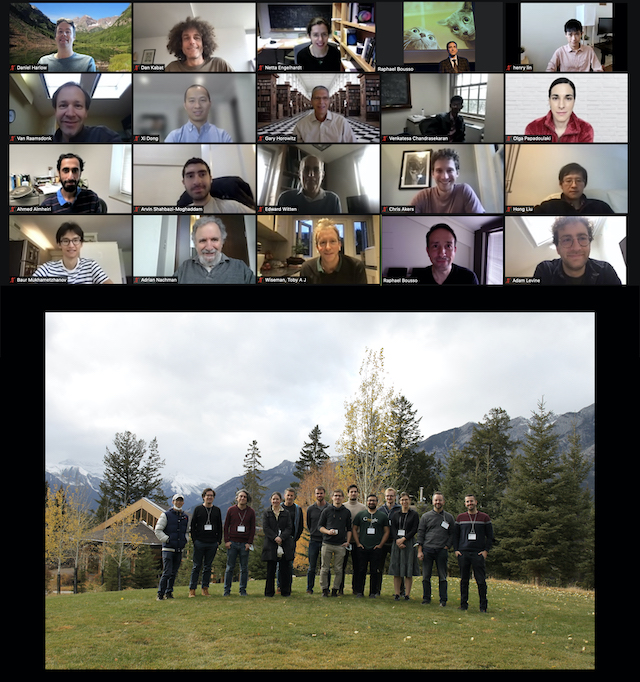Gravitational Emergence in AdS/CFT (21w5136)
Organizers
Sebastian Fischetti (McGill University)
Netta Engelhardt (Massachusetts Institute of Technology)
Mark Van Raamsdonk (University of British Columbia)
Description
The Banff International Research Station will host the "Gravitational Emergence in AdS/CFT" workshop in Banff from October 24 to October 29, 2021.
An outstanding problem of modern physics is the reconciliation of the two most successful broad theories of physics: general relativity, which describes the gravitational force exerted by massive objects in terms of the bending and rippling of spacetime, and quantum mechanics, which describes the behavior of matter on the minute scales of subatomic particles such as electrons. While both theories are remarkably successful independently, they appear to give contradictory predictions of phenomena that involve gravity at the small scales at which quantum mechanics is relevant. Such phenomena include the Big Bang, when the universe was small enough to be described by quantum mechanics and sufficiently dense to also require a gravitational description; also the process of the final stages of the death of a large star, when a black hole is formed and the star’s matter is concentrated in an extremely small volume. A proper description of these phenomena requires a unified theory of quantum gravity.
A particular model of quantum gravity, and the one on which this workshop focuses, works to understand an idealized situation in which gravity essentially lives “in a box”. It is a remarkable property of quantum gravity that the behavior of gravity inside the box, including quantum effects, can be described purely by the physics on the surface of the box. Importantly, because the surface of the box is rigid, no gravity is needed in describing its physics: hence the remarkable feature of this model is that quantum gravitational physics can actually be described without apparently using any gravity at all! Answering questions like what happened in the Big Bang or what happens inside black holes then amounts to rephrasing what’s happening on the boundary of the box, which we understand well, in the gravitational language of the inside. This rephrasing is called bulk reconstruction, and is the focus of this workshop.
The Banff International Research Station for Mathematical Innovation and Discovery (BIRS) is a collaborative Canada-US-Mexico venture that provides an environment for creative interaction as well as the exchange of ideas, knowledge, and methods within the Mathematical Sciences, with related disciplines and with industry. The research station is located at The Banff Centre in Alberta and is supported by Canada's Natural Science and Engineering Research Council (NSERC), the U.S. National Science Foundation (NSF), Alberta's Advanced Education and Technology, and Mexico's Consejo Nacional de Ciencia y Tecnología (CONACYT).






